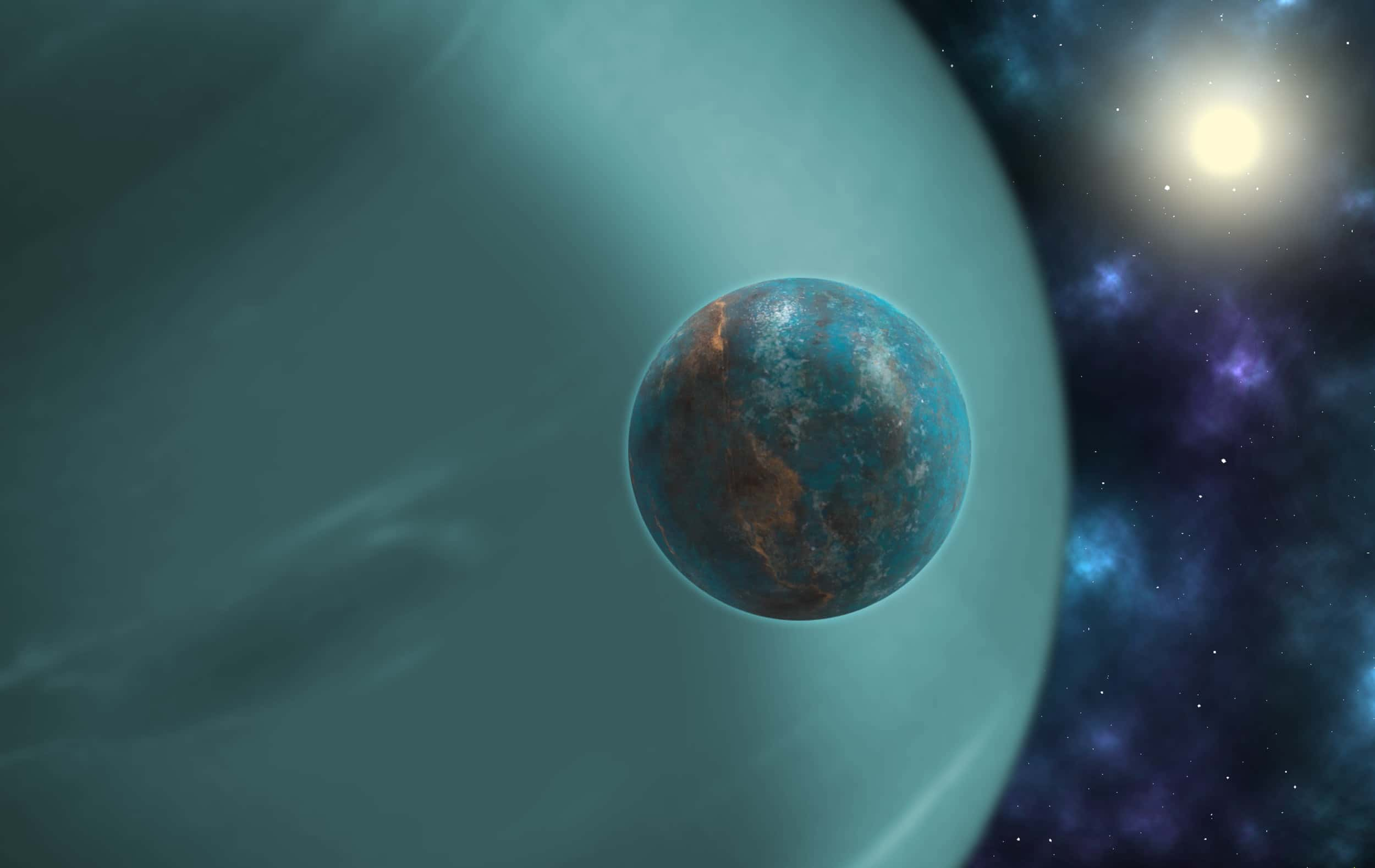In our solar system, various types of moons exist, including rocky, oceanic, and frozen-ice moons.

A gas giant planet is a celestial body known for its massive size and gaseous composition
However, gas moons, despite being absent from our system, are not impossible. Recent discoveries in exoplanet studies have unveiled two potential gas giant moons, although their confirmation remains pending.
In contrast to the prevalent gas giant planets in our solar system, these ‘exomoons’ orbit even larger gas giants. This anomaly challenges the norm, prompting inquiries into the reasons behind the absence of gas moons, especially within our cosmic neighborhood.
The formation of gas giant planets involves two primary processes: ‘bottom-up’ and ‘top-down’. Our solar system‘s gas giants, like Jupiter and Saturn, formed through ‘core accretion’. Initially, they accumulated as rocky bodies before gathering substantial gas from the surrounding protoplanetary disk. This process resulted in the formation of massive gas giants due to their gravitational strength and available gas content.
Conversely, the ‘top-down’ model describes the direct formation of gas worlds from collapsing gas clouds, akin to star formation. However, a limiting factor known as the ‘opacity limit for fragmentation’ restricts this process. Gas clumps under a certain mass cannot radiate enough heat to sustain contraction, inhibiting the creation of gas giant planets smaller than about 3 Jupiter masses.
In our solar system, moon formation primarily followed the bottom-up core accretion, limiting the remaining material available for moon formation
As a result, gas moons couldn’t form due to the scarcity of material and insufficient gravity to retain significant gas content. Anomalies in our cosmic vicinity, such as captured moons like Mars’ Phobos and Deimos, Saturn’s Phoebe, and Neptune’s Triton, formed independently in space and later got caught by planet gravitational forces.
In rare instances, gas giant planets could potentially capture smaller gaseous planets, resembling the scenarios observed with the candidate exomoons Kepler 1625b-i and Kepler 1708b-i. These sizable gas giants challenge existing theories, possibly indicating capture mechanisms due to migration towards larger planets.
While Kepler 1625b-i and 1708b-i might not be conventional moons, they possibly represent double planets, akin to Pluto and Charon in our solar system, orbiting a shared center of mass rather than one orbiting the other.
In essence, the scarcity of gas moons within our solar system relates to the prevalent formation processes, restricting the available material for moon formation around gas giant planets. Yet, ongoing astronomical discoveries hint at unconventional celestial bodies challenging established cosmic norms.
READ ALSO: Artemis 3 Mission Faces Potential Delays And Challenges, Warns Government Report




